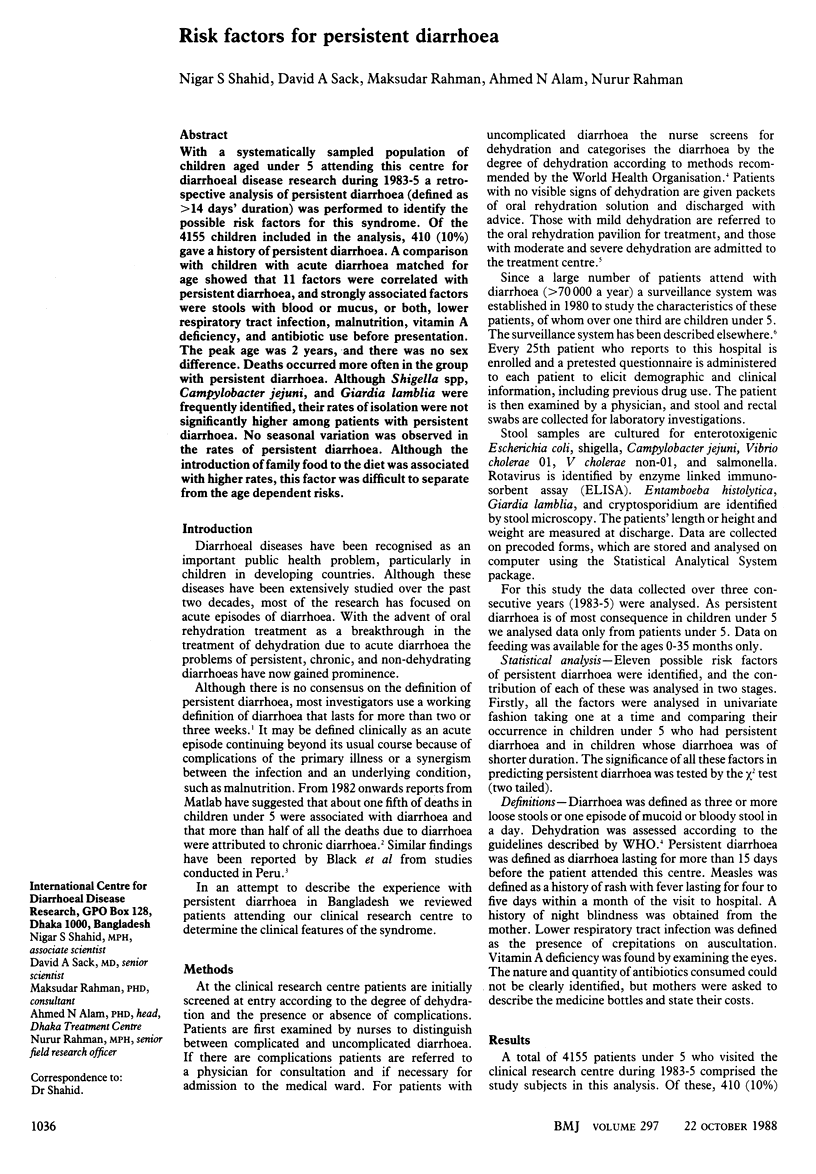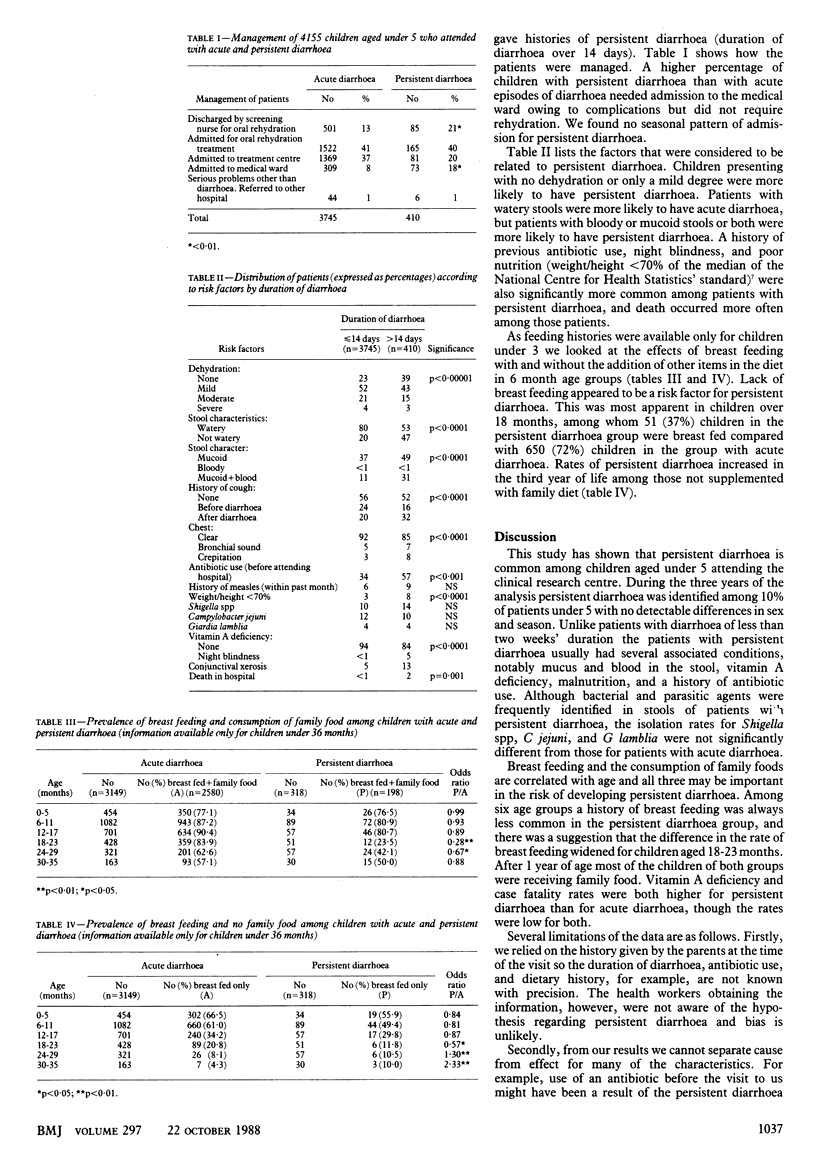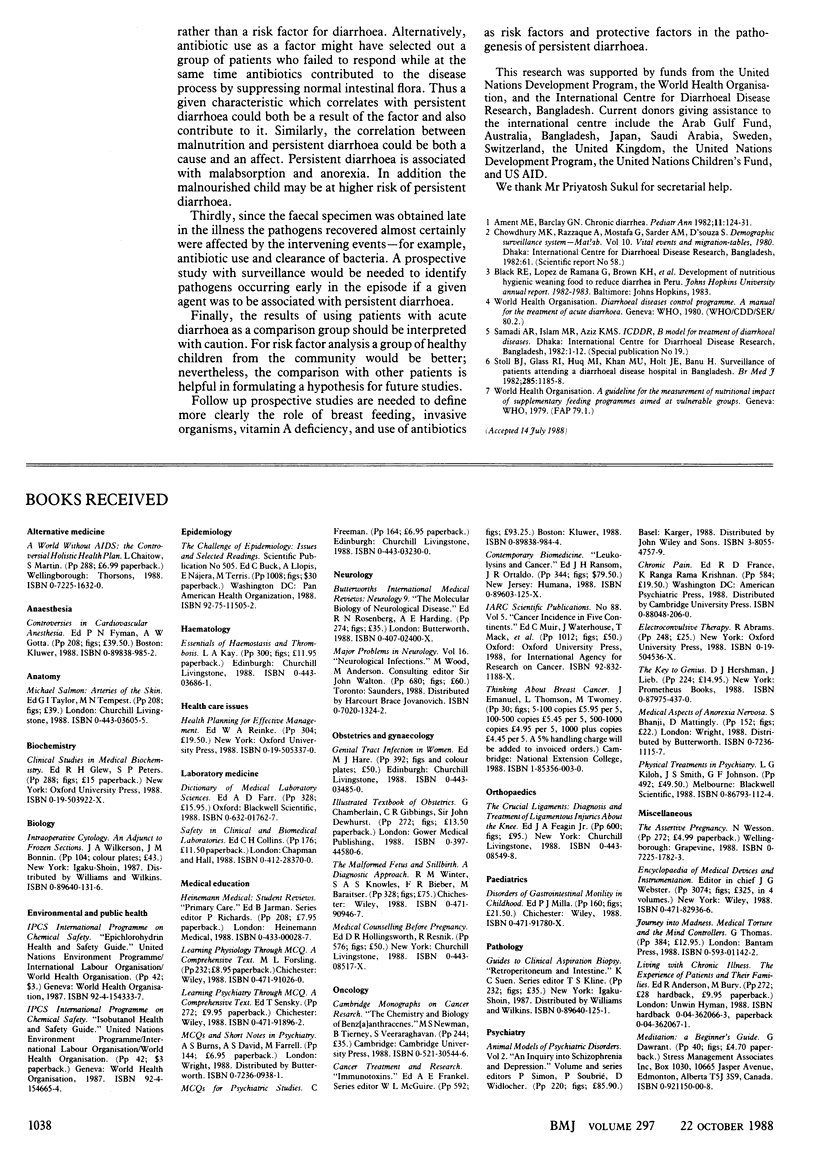Abstract
With a systematically sampled population of children aged under 5 attending this centre for diarrhoeal disease research during 1983-5 a retrospective analysis of persistent diarrhoea (defined as greater than 14 days' duration) was performed to identify the possible risk factors for this syndrome. Of the 4155 children included in the analysis, 410 (10%) gave a history of persistent diarrhoea. A comparison with children with acute diarrhoea matched for age showed that 11 factors were correlated with persistent diarrhoea, and strongly associated factors were stools with blood or mucus, or both, lower respiratory tract infection, malnutrition, vitamin A deficiency, and antibiotic use before presentation. The peak age was 2 years, and there was no sex difference. Deaths occurred more often in the group with persistent diarrhoea. Although Shigella spp, Campylobacter jejuni, and Giardia lamblia were frequently identified, their rates of isolation were not significantly higher among patients with persistent diarrhoea. No seasonal variation was observed in the rates of persistent diarrhoea. Although the introduction of family food to the diet was associated with higher rates, this factor was difficult to separate from the age dependent risks.
Full text
PDF


Selected References
These references are in PubMed. This may not be the complete list of references from this article.
- Ament M. E., Barclay G. N. Chronic diarrhea. Pediatr Ann. 1982 Jan;11(1):124–131. doi: 10.3928/0090-4481-19820101-08. [DOI] [PubMed] [Google Scholar]
- Stoll B. J., Glass R. I., Huq M. I., Khan M. U., Holt J. E., Banu H. Surveillance of patients attending a diarrhoeal disease hospital in Bangladesh. Br Med J (Clin Res Ed) 1982 Oct 23;285(6349):1185–1188. doi: 10.1136/bmj.285.6349.1185. [DOI] [PMC free article] [PubMed] [Google Scholar]


